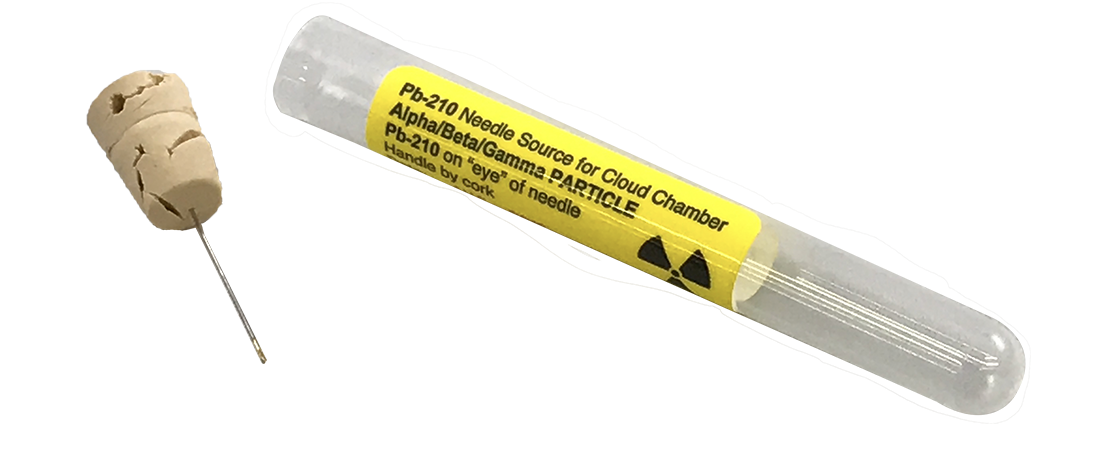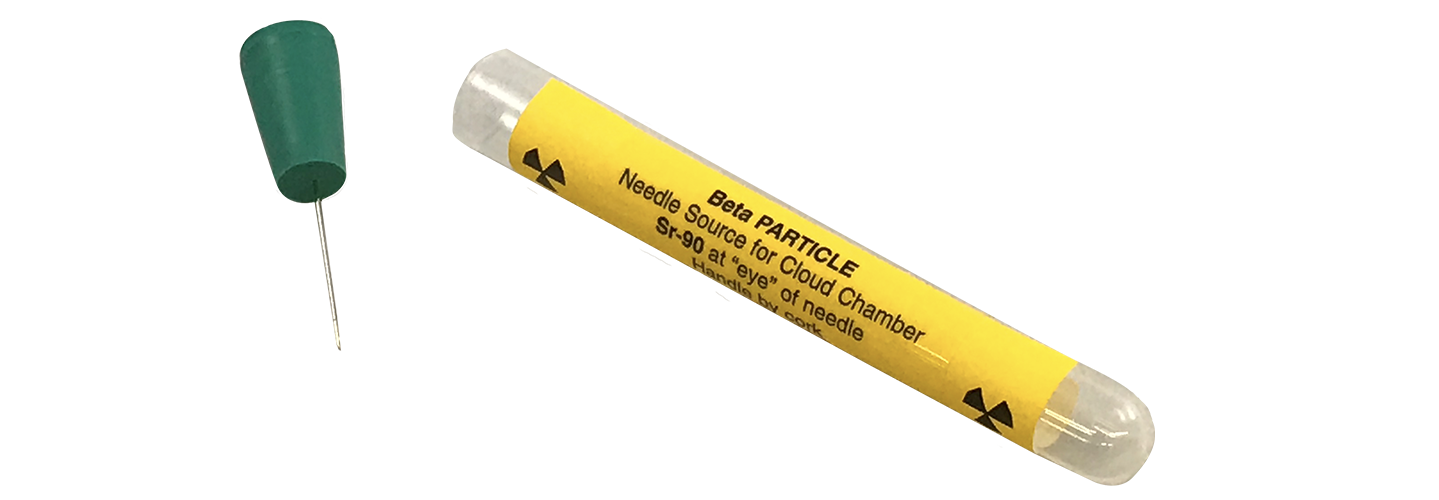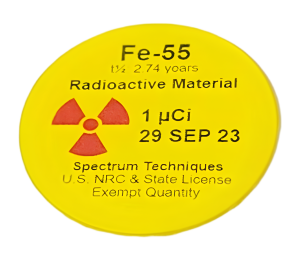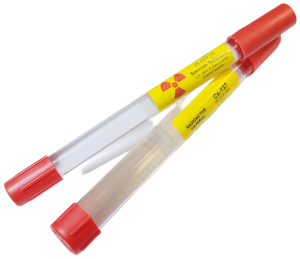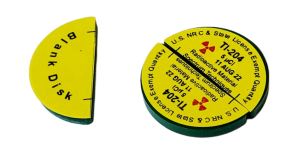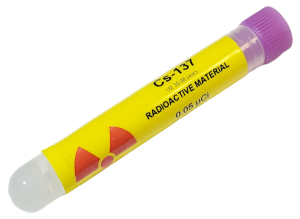ALPHA/BETA NEEDLE SOURCES
Needle sources are specifically designed for use in cloud chamber experiments to visualize the paths of charged particles.
NEEDLE SOURCE
A needle source is specifically designed to be used with a cloud chamber. The needle source introduces ionizing radiation into the chamber, making it possible to observe alpha and beta particle tracks. Needle sources are available in three isotopes at fixed activities:
- Pb-210 - 0.01 µCi (0.37 kBq)
- Po-210 - 0.01 µCi (0.37 kBq)
- Sr-90 - 0.01 µCi (0.37 kBq)
The cork or rubber stopper is placed into a test tube for protection during shipping and storage.
CALIBRATION OPTIONS
Needle sources are not available for calibration. The maximum deviation of the delivered activity from the nominal values listed is ±20%.
REGULATORY COMPLIANCE
Activities provided will not exceed the U.S. NRC Exempt Quantity limit.
CONTACT US
If you have specific requirements or cannot find a needle source that meets your specifications, please contact Spectrum Techniques for further assistance.
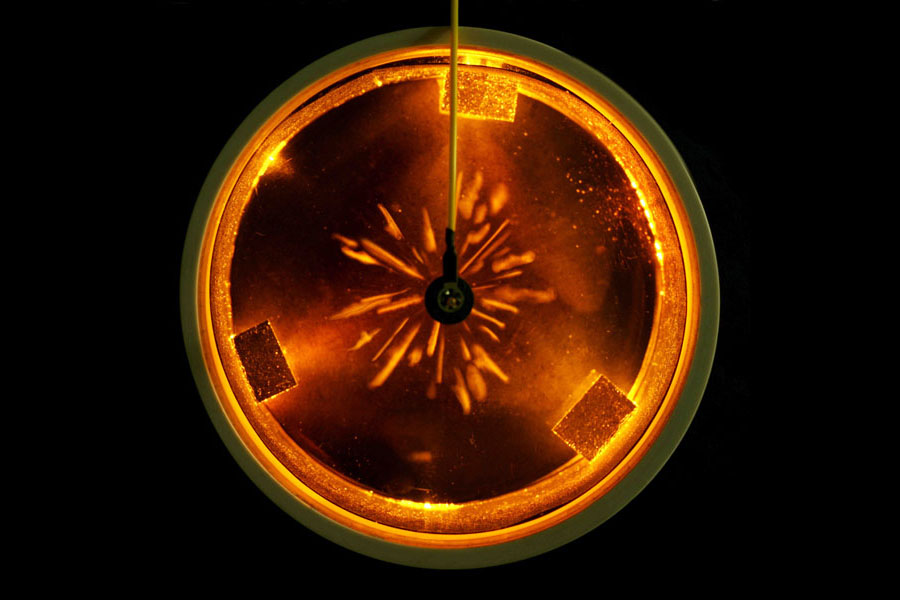
Physics Enterprises’ Diffusion Cloud Chamber
The displayed image and video feature the operational use of a Spectrum Techniques Pb-210 needle source.
WHAT IS A CLOUD CHAMBER AND HOW DOES IT WORK?
A cloud chamber is a scientific instrument used to visualize the paths of charged particles, such as alpha and beta particles. It operates based on the principles of supersaturation and condensation. Here’s how a cloud chamber works:
- Supersaturation: The key principle behind a cloud chamber is the concept of supersaturation. In the chamber, a vapor or gas, often a mixture of alcohol and water, is maintained at a temperature slightly above its dew point but below its boiling point. This creates a supersaturated environment, meaning the air in the chamber is holding more water vapor than it would under normal conditions.
- Ionization: Charged particles, such as alpha and beta particles, passing through the chamber, ionize the molecules in the supersaturated air. This means they knock off electrons from the vapor molecules, creating positively charged ions and free electrons.
- Nucleation: The presence of these free electrons provides sites for water vapor molecules to condense. As a result, water droplets start to form along the path of the charged particle. These tiny droplets are visible as a cloud-like track.
- Track Visualization: The path of the charged particle becomes visible due to the formation of these condensation droplets. The particles leave a trail of tiny cloud-like droplets as they move through the chamber. The direction and curvature of the particle’s path can be observed and analyzed.
